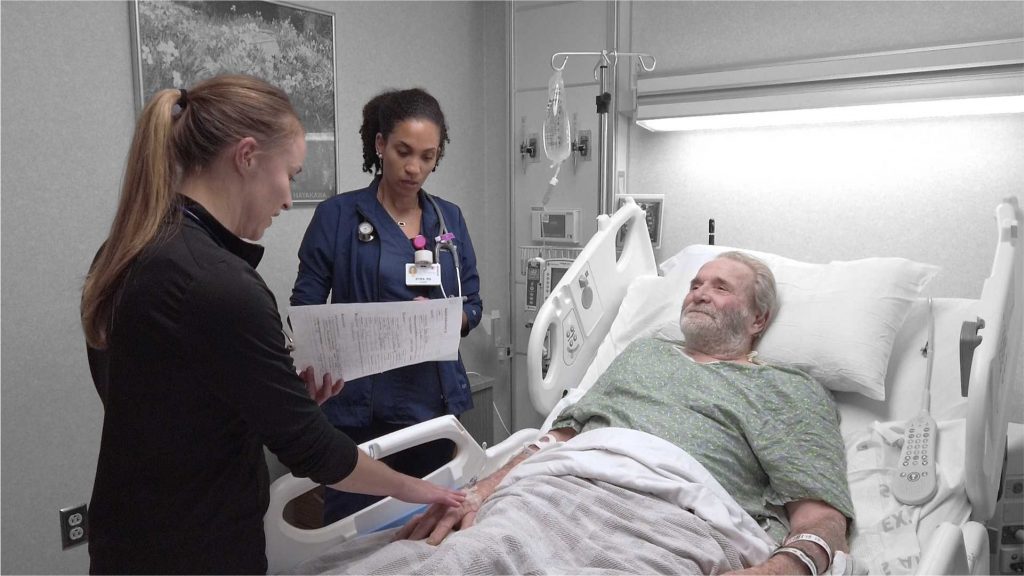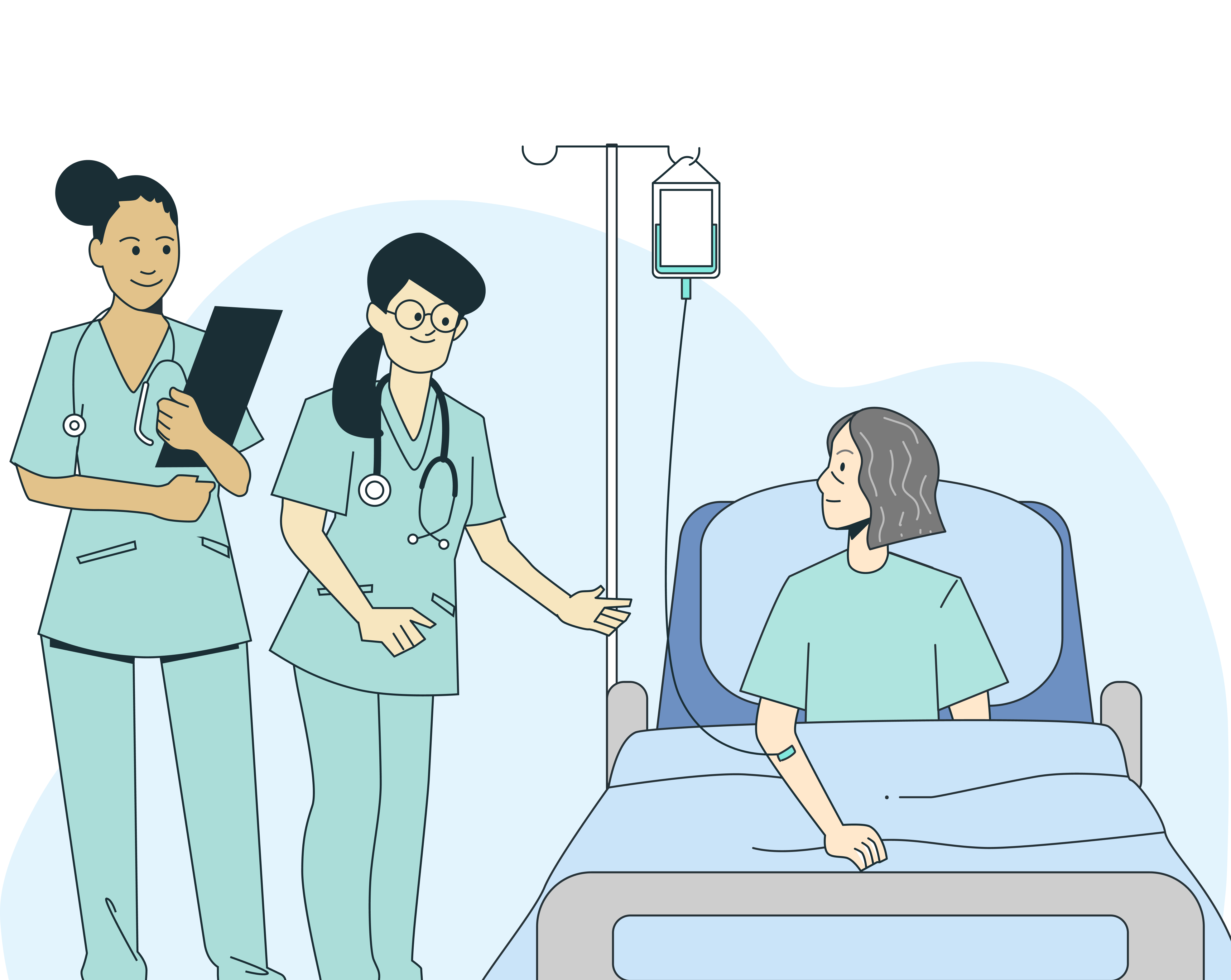Nurses First for
Nursing Leaders
A thriving nursing workforce is only a shift change away
An efficient change of shift program to empower and inform your nurses
Why Nurses First?
Most of our clients come to us for help because their quality of care outcomes are below expectations. We’ve found that this can be because of the following:
- Reactive care: Nurses are struggling to keep up with the demands of patient care and are falling behind on tasks, bogged down by inefficient handovers.
- Cognitive Strain: Differing reporting styles increase cognitive load, impacting nurses’ ability to identify & mitigate risks
- Adverse events: Known complications of hospitalization are slipping through the cracks, leading to delayed discharge and increased costs.
A lot of our clients are frustrated because there is too much variability in their handovers, their nurses don’t know what to expect or what they’ll receive and it’s wasting precious time. This commonly manifests as:
- Inconsistent Communication: Variable shift reports hinder consistent information flow, enabling risks to go unchecked and take longer than needed.
- Communication breakdowns: Critical information to address patient issues and progress care are being lost in the shift, and across shifts.
- Staff Frustration and Burnout: Nurses become frustrated and burnt out due to chaotic shift changes, leading to decreased morale, job dissatisfaction, and increased staff turnover.
Hear the difference yourself
Huddle & Handover developed by the frontline
Designed by nurses for nurses
The Nurses First Change of Shift Huddle & Bedside Handover differs from the norm:
- Unit overview: Huddle provides nurses with an overview of the unit (high risk patients, events scheduled, safety precautions to be aware of). Staff start their shift as a team.
- Patient overview: Handover ensures a structured flow of pertinent information to the oncoming nurses, without extraneous detail, and engaging patients in their care. Nurses are ready to proactively contribute to care progression.
- User-Friendly Formats: Huddle and Handover utilize streamlined, structured formats for consistent and efficient information sharing. Refined over dozens of implementations and customized to your unit’s needs. Clients report how these processes empowered their nurses to be leaders and advocates for their patients.
- Care continuity: CoSH & BH create a continuity of care for nursing staff and for patients across shifts. Staff understand the pressures and supports they have to manage at risk patients.
Have questions?
Frequent Questions
Yes, both Change of Shift Huddle and Bedside Handover are nursing processes that we do in the first 30 minutes of the shift.
There are a few reasons we focus on this first half-hour:
- There is great power in beginnings. Our first interactions set the tone for the shift. Are we a team of professionals looking out for each other, or a set of individuals doing our own thing?
- The outgoing shift has accumulated a lot of knowledge – and it can either be fully passed along, or partially walk out the door with them.
- Small improvements in daily routines have power. When it’s something we do multiple times a day, small moments really add up.
- Units with a super-professional change of shift – every shift – tend to be calmer, to run more smoothly, and to handle stress and crisis better.
Nurses First (N1) is designed by nurses for nurses. We offer N1 to units ready to start each shift with the support and information to be our best.
N1 is designed to improve the culture, safety, and efficiency profile of nursing care. It has been developed in the field from thousands of nursing shifts and refined across dozens of implementations.
N1 units standardize and sustain the following evidence-based communication processes through each nursing shift:
- Change of Shift Huddle
- Bedside Handover
Nurses in over 100 hospital units worldwide have field-tested and refined these two processes for Nurses First — timeless principles and fresh evidence-based practice.
N1 is based on a ‘pay-it-forward’ ethos of nurses caring for each other first, starting every shift feeling supported by each other.
For the first act of every shift, N1 brings the outgoing and oncoming nursing staff together in a Change of Shift Huddle, handing over the unit as if it were a patient.
Then we go to the heart of nursing by visiting the patient, transferring care and responsibility in a warm, super-professional Bedside Handover. Nurses First elevates Bedside Handover from a task into purposeful skill set we learn, practice, and role model.
Actually, since the right information and details are handed over at the change of shift, we spend less time searching for information and much less time playing catch-up and dealing with surprises later in the shift. The pay-it-forward approach is less work because it’s more proactive. The work also feels more purposeful and collaborative.
Customization happens during in-service training and launch usually happens the following Monday. When ready, the unit has the chance to try to achieve Nurses First Excellence.For participating units, implementation proceeds through several stages, culminating in Nurses First Excellence:
- Preparation and Readiness – the local Nurses First Project Officer is appointed, receives mentoring, and publishes the implementation timeline
- Nurse Manager orientation – Nurse Managers and charge nurses learn about Nurses First and their implementation roles
- Online Training – as many staff as possible from participating units complete a 25-minute online training module before receiving onsite training.
- Onsite Training Week – for 2-3 days, Nurses First educators visit each unit each day at scheduled times to lead:
- In-Service Training – participating units receive a brief ‘in-service’ style onsite training, led by Nurses First educators reaching as many nurses as possible
- Assessor Training – nurse managers and their assessors learn how to use the 1Unit Software Platform to conduct and monitor electronic skills assessments of Bedside Handover
- Customization – staff on each unit participate in customizing the Nurses First templates: the Change of Shift Huddle sheet (1-page) and the Bedside Handover form (1-page, front-and-back)
- Launch – the week after onsite training, the Nurses First processes of Change of Shift Huddle and Bedside Handover officially launch and begin
- Skills-Assessment Planning – the Project Officer and nurse managers develop an assessor pool (3-5 assessors for each unit) and choose a hospital-wide deadline within approx. 4-8 weeks by which to complete all skills assessments
- Skills-Assessment Period – the assessor pool on each unit conducts an average of 3-4 skills assessments per day, and the Project Officer reviews weekly “Nurses First Activity Reports” to track and manage progress of each participating unit
- Nurses First Excellence – units earn Nurses First Excellence as long >90% of nurses are verified as competent in Bedside Handover and there is a governance and accountability model in place to maintain training, verification and service level commitments on each unit.
In-service training typically happens over a 3-day period (e.g., Tue – Thurs) so we can reach as many nurses as possible.
When >90% of nurses on a unit have been skills-verified in Bedside Handover competence, the unit has achieved Nurses First Excellence and there is a governance and accountability model in place to maintain training, verification, and service level commitments on each unit.
This is an important milestone. It means a pay-it-forward skill set is verifiable on the unit. Nurses First Excellence means nurses, leaders, and patients can have high confidence in the communication between shifts for that unit.
A unit can maintain Nurses First Excellence by refreshing verification for >90% of nurses at least every other year. This includes training and verifying the Bedside Handover skills of new hires.
Explore The Processes


Change of Shift Huddle
In Team Huddle, the out-going charge nurse gives a 3-minute structured presentation to the entire on-coming shift, handing over the unit as if it were a patient.


Structured Bedside Handover
Structured Bedside Handover standardizes each handover with a single-page shift report form. It uses an ISBAR framework, Review of Systems outline, and it’s customized for each unit.


